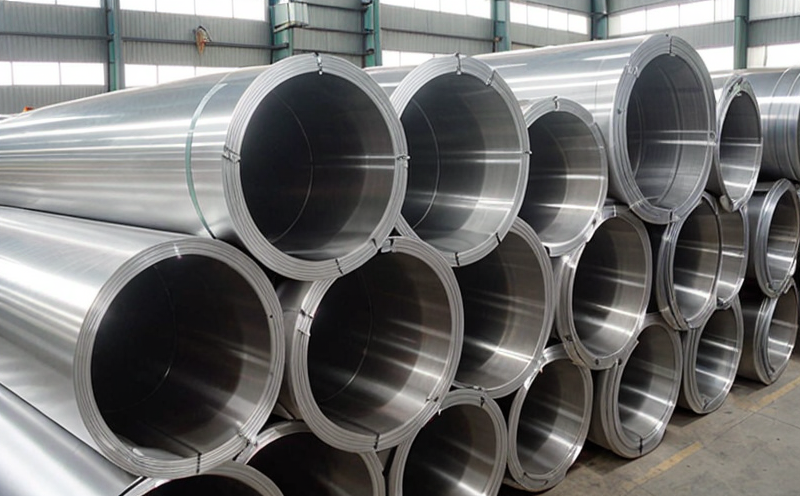IEC 60068-2-52 Marine Corrosion Simulation of Cable Systems
The IEC 60068-2-52 standard is a cornerstone for assessing the corrosion resistance of cable systems in marine environments. This test method simulates the corrosive effects of salt spray and humidity, providing critical data for quality managers, compliance officers, R&D engineers, and procurement personnel responsible for ensuring product reliability.
Incorporating this testing into the design process allows manufacturers to identify potential weaknesses early, optimizing material selection and manufacturing processes. The test is particularly relevant for companies involved in maritime, offshore, and naval applications where cable systems are exposed to harsh environmental conditions.
Corrosion can significantly impact the performance of marine equipment, leading to premature failure or degradation of critical components. By adhering to IEC 60068-2-52, organizations ensure that their products meet the stringent requirements set for durability and reliability in challenging environments.
The simulation involves subjecting cable systems to a controlled environment mimicking salt spray exposure, typically over several weeks or months. This process helps determine the material's resistance to corrosion without exposing it directly to real-world conditions, which can be unpredictable and variable.
Testing procedures are meticulously outlined in IEC 60068-2-52, ensuring consistency across different laboratories and reducing variability in results. The standard specifies the equipment used for testing, including salt solution preparation, spray nozzles, and humidity control units. Compliance officers can rely on these standardized protocols to ensure that all tests are conducted under controlled conditions.
R&D engineers benefit from detailed test results, which provide insights into material performance under specific environmental stressors. These data points are invaluable for refining product designs and improving overall quality. For procurement teams, this testing ensures that they source high-quality materials that can withstand the rigors of marine operations.
Real-world applications of IEC 60068-2-52 include the development of submarine cables, mooring systems, and navigation equipment. By incorporating this test into their quality assurance processes, manufacturers can gain a competitive edge by delivering products that are not only reliable but also cost-effective in terms of maintenance and replacement.
The simulation process is designed to replicate real-world conditions as closely as possible without the need for extensive field testing. This approach ensures that manufacturers have accurate data on material performance before committing resources to full-scale deployments.
Compliance with IEC 60068-2-52 not only enhances product reliability but also supports regulatory compliance and certification efforts. Many industry standards and certifications require adherence to this test method, making it a critical component of the quality assurance process for marine equipment manufacturers.
The detailed nature of the testing protocol allows researchers to explore various factors affecting corrosion resistance, such as coating types, cable insulation materials, and environmental variables like temperature and humidity. This comprehensive approach ensures that all potential issues are identified early in the development cycle.
Applied Standards
| Standard Name | Description |
|---|---|
| IEC 60068-2-52 | Marine Corrosion Simulation of Cable Systems |
| ISO/TS 17924 | Environmental Testing for Marine and Offshore Structures |
Scope and Methodology
The scope of IEC 60068-2-52 encompasses the evaluation of cable systems exposed to marine environments, focusing on their resistance to corrosion. The methodology involves subjecting specimens to a controlled environment that simulates salt spray exposure and humidity levels characteristic of maritime conditions.
| Test Parameter | Specification |
|---|---|
| Salt Spray Exposure Time | Typically 1,000 hours (41.7 days) |
| Humidity Levels | Relative humidity maintained at ≥95% |
The testing process begins with the preparation of specimens, which includes cleaning and drying to ensure consistent results. Once prepared, the cables are placed in a chamber where they are exposed to salt spray for the specified duration. During this period, environmental parameters such as temperature, humidity, and exposure time are meticulously monitored.
After the test cycle is complete, specimens undergo visual inspection to assess any visible signs of corrosion. Additionally, destructive testing may be conducted to evaluate internal degradation. The results provide critical data on material performance, which can inform design improvements and enhance product reliability.
The methodology also includes post-test analysis, where samples are examined for changes in physical properties, such as tensile strength or conductivity. This comprehensive approach ensures that all aspects of the cable system's behavior under marine conditions are thoroughly evaluated.
Eurolab Advantages
At Eurolab, we offer a range of services to support your compliance and quality assurance needs. Our expertise in IEC 60068-2-52 ensures that you receive accurate, reliable results every time.
- State-of-the-Art Facilities: Our laboratories are equipped with the latest technology to conduct marine corrosion tests according to IEC 60068-2-52 standards.
- Experienced Technicians: Our team of specialists has extensive experience in marine equipment testing, ensuring precise and consistent results.
- Comprehensive Reporting: We provide detailed reports that include all test parameters and results, supporting informed decision-making.





